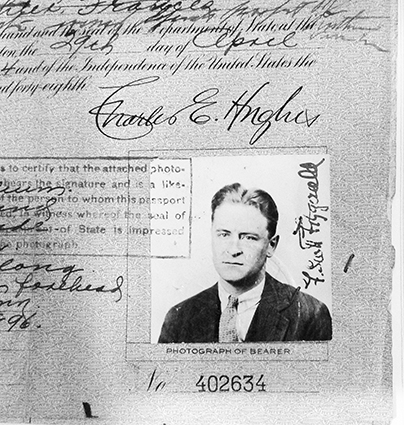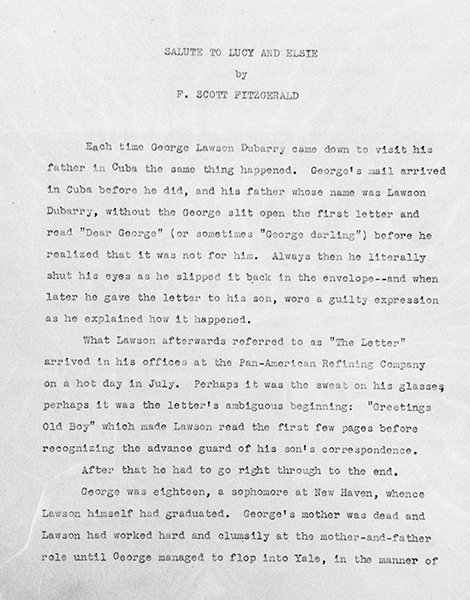
FSF passport, 1924.
In April 1939, Zelda and Scott went on vacation to Cuba. It was horrible for them both; he drank to excess and had to be hospitalized in New York, and Zelda then had to return to Highlands Hospital alone. It would be the last time the Fitzgeralds ever saw each other. “Salute to Lucy and Elsie” is born of that time. Fitzgerald began writing it almost as soon as he returned, still sick, to California from New York.
Fitzgerald submitted “Salute to Lucy and Elsie” directly to Arnold Gingrich, the editor of Esquire, in the midsummer of 1939. Gingrich liked it, and sent it on to his reader Alfred Smart, with the notation “Al—What’s your feeling about this modern-day version of ‘Fathers + Sons’ as a story for Esquire?” On August 15, Smart replied negatively. “Evans letter to George is pretty hot, and the Catholic angle would have to be washed and laundered.” Gingrich wrote to Fitzgerald the next day, a detailed letter explaining the many things he liked about the story, but not addressing the heat of Wardman Evans’s letter to George, nor “the Catholic angle.” He praised the story, saying “The whole development seems right as rain to me,” but objected to one marriage. “I realize that the objection I am raising goes to the very guts of the story and isn’t a small matter of incidentals,” Gingrich went on, almost apologetically, but still asked for the change: “can something else happen, instead of the second marriage?” Fitzgerald changed nothing.
Two additional pages of an alternate typescript version of the story show that at one time the focus of the story was not on fathers and sons at all, but on fathers and daughters. The man from whose point of view this version unfolded was Chauncy Garnett, a Philadelphia architect, a friend of the families of both Lucy and her young husband, Llewellen. Lucy has run away to Connecticut to marry him, and things have gone very wrong thereafter, once the traditionally “right thing” has been done. These two pages were saved with a note from Gingrich explaining what they are, and returned to Fitzgerald’s estate after his death.
